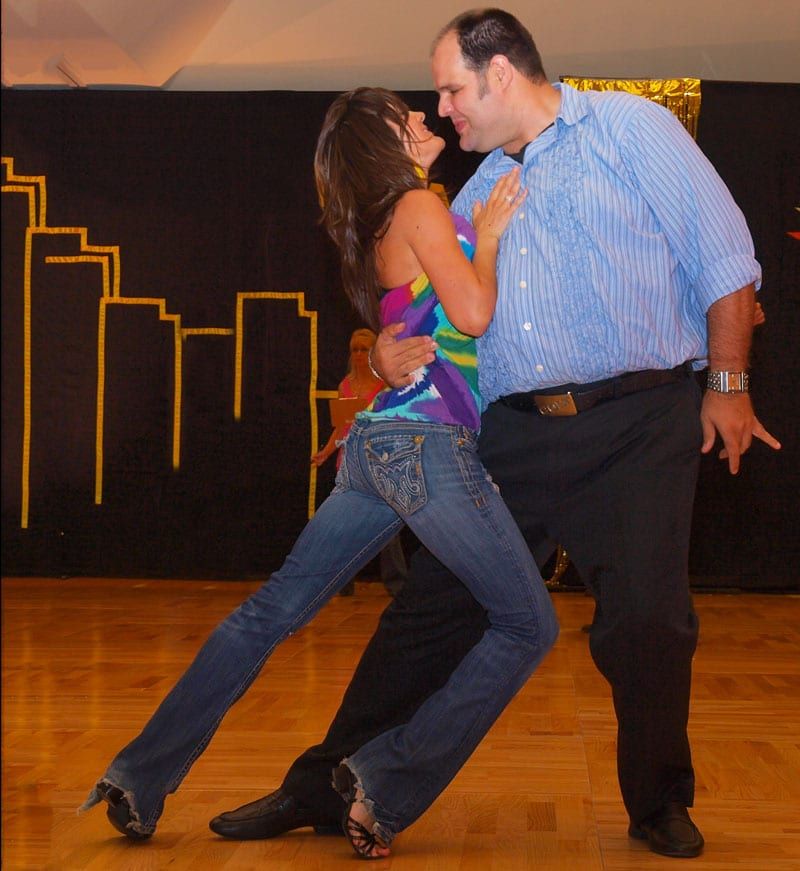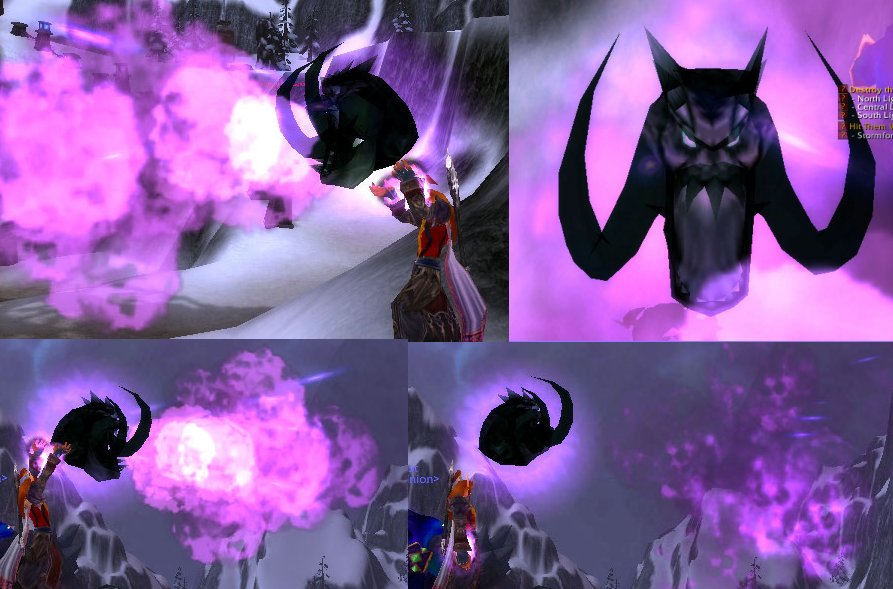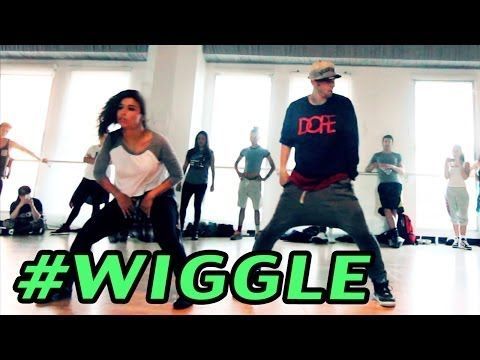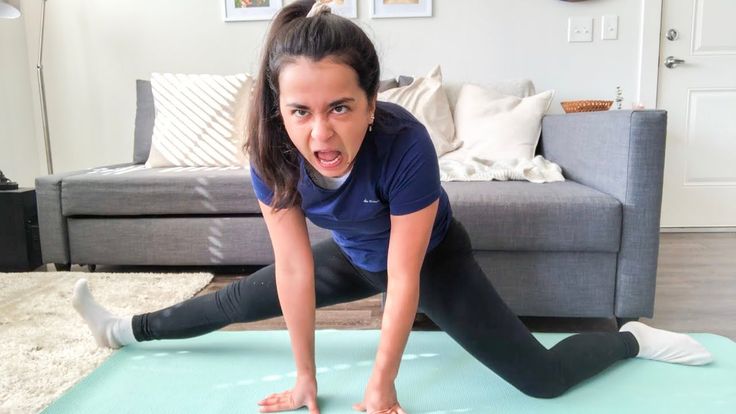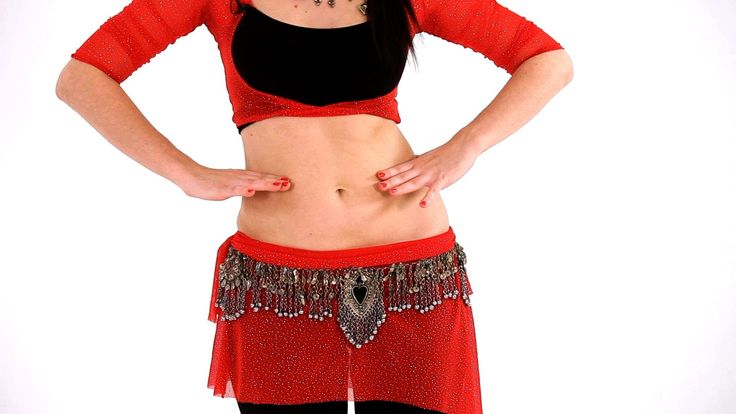How to belly dance hips
The 4 Tips That Will Have You Belly Dancing Like Shakira
Share this article
Have you ever been to a wild party and found yourself standing on the edge of the dancefloor awkwardly clapping along while you watch everyone else dance and go crazy? No? Is that just us?
Well, we’re going to go ahead and pretend that we’re not the only ones who are like this because this article is all about teaching you Fairies how to shake what your mama gave ya.
For those keen on learning how to belly dance and make their way towards the centre of the dance floor, the first rule you need to know is to own your own style. The reality is, if you feel awkward when you dance, then you’ll look it! You need to feel the music and not be afraid to have a little fun.
Having said that there are a few techniques that can help you “fake it till you make it”.
To do a hip lift or shimmy, you need to bend both knees. Then, straighten your right leg, which should raise your right hip, lifting it upward. The hip bone should shoot up towards your rib cage. Make sure to keep your heels flat on the ground as you do the lift and try not to move your upper body at all.
Now, you need to bring your right hip back down and try the same movement on the other side. Just straighten your left leg and raise your left hip upward.
Repeat the hip lift on both sides at a faster pace, while skipping the break in the middle between the two sides. It should look like your hips are lifting on the right and then on the left smoothly and fluidly.
At full speed, your hips will shimmy from side to side at a quick pace, which is known as the “shimmy” move.
Step one, check!
To do a belly roll, first begin with your feet flat on the ground and your upper body lifted, with your arms relaxed at your sides. Now bend your knees.
Next, contract just your upper abdominal muscles, drawing them into your spine. Then, contract just your lower abdominal muscles, drawing them inward. Push out your upper abs and then push out your lower abs.
Keep repeating these movements in a sequence and try to make the contracting in and the pushing out of your abdominal muscles fluid, with no pauses or breaks.
To mix things up a little, add a little hand movement to your routine by mimicking the back and forth motion of a windscreen wiper. Just use your index finger and middle finger on each hand, side by side.
Another popular hand movement to spice up your dance routine is one that sees you mimicking the action of changing the light bulb. Try it a few times in time with the music until you follow the beat.
Cover photo by: @siempreweddings
Posted in Expert Advice by wedded wonderland
Share this article
Next >>
The Best Crystals for Love, Marriage & Relationships
Join Our Mailing List
Name *
Email address *
State *
How to Belly Dance | The 2023 Dancer’s Guide
Learning how to belly dance is a great way to connect to your body, strengthen your muscles and build your confidence. This distinct form of dance is one of the oldest known styles with a rich cultural history and many mental and physical benefits.
This distinct form of dance is one of the oldest known styles with a rich cultural history and many mental and physical benefits.
Although often performed solo, belly dance is rooted in connection, emphasizing the relationships between the dancer, the body, the community and the earth.
If you’re a beginner, you may be asking questions like is belly dancing difficult? Where can I learn how to belly dance? Or, can I lose weight through belly dancing? From in-person dance classes to online lessons, you can learn how to belly dance and explore the history and culture of this unique style with a group or in the comfort of your own home.
Whether you want to step outside of your comfort zone with a new type of dance or challenge yourself to shake your hips like Shakira, one of the world's most famous belly dancers, learning how to belly dance is a fun and energizing way to explore how your body moves while building confidence with each hip lift or belly roll.
Jump to Section
- How to Belly Dance for Beginners
- What is Belly Dancing?
- Belly Dancing History and Origin
- Egyptian Belly Dance
- What Does Belly Dance Do for Your Body?
How to Belly Dance for Beginners
Belly dancing for beginners starts with learning to isolate various parts of your body before advancing to layered isolations in different patterns to create a unique and mesmerizing sequence of movements.
Foundational movements when learning how to belly dance include hip lifts, shimmies, belly rolls, figure eights and more. Newcomers learning how to belly dance might find it challenging at first, but thankfully, there are many instructors and resources available to help guide you as you master the basic moves.
Try Belly Dance Classes
Working with a seasoned instructor ensures the movements are performed safely and correctly and can prevent you from picking up bad habits and postures.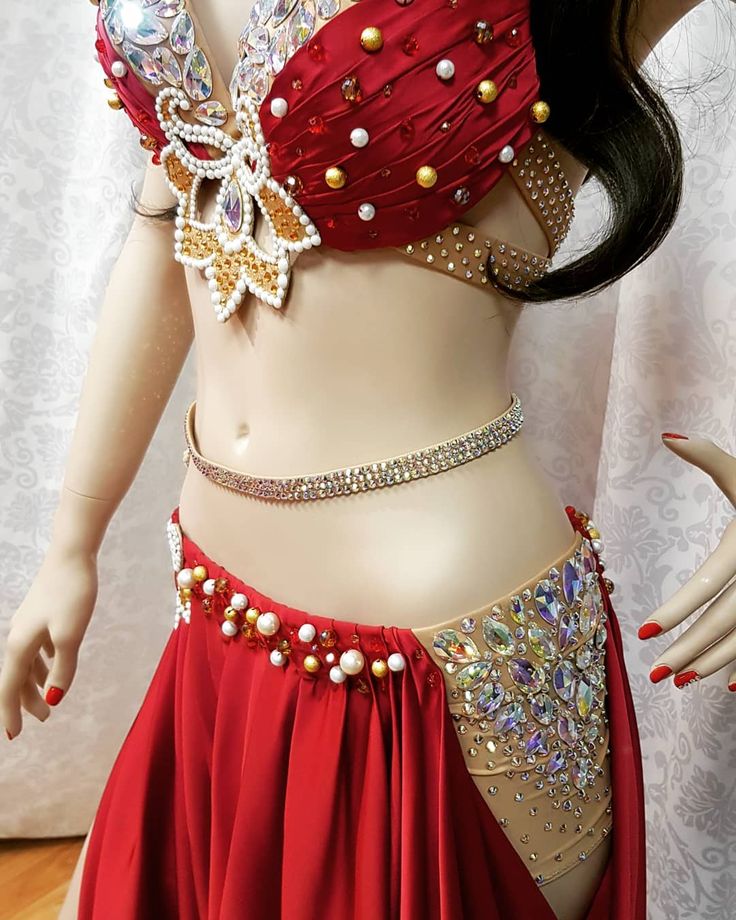
You can find classes available to help you learn how to belly dance at all levels whether you are looking for dance classes in NYC, dance classes in Las Vegas, dance classes in Orlando or dance classes near you.
If learning how to belly dance in person is a little too far out of your comfort zone or you can’t find a class in your area, there are also online dance classes available for you to try so that you can learn belly dance online and in the comfort of your home.
Once you are comfortable with the basics of how to belly dance, try a class with advanced techniques and begin to add your own unique flair to the routines.
via CanvaWhat is Belly Dancing?
Belly dancing is a distinctive form of dance that focuses on isolated movements of the hips and torso developed from rituals and customs from throughout the Middle East. This style of dance can be either performed solo or in a group and is well-suited to the feminine form.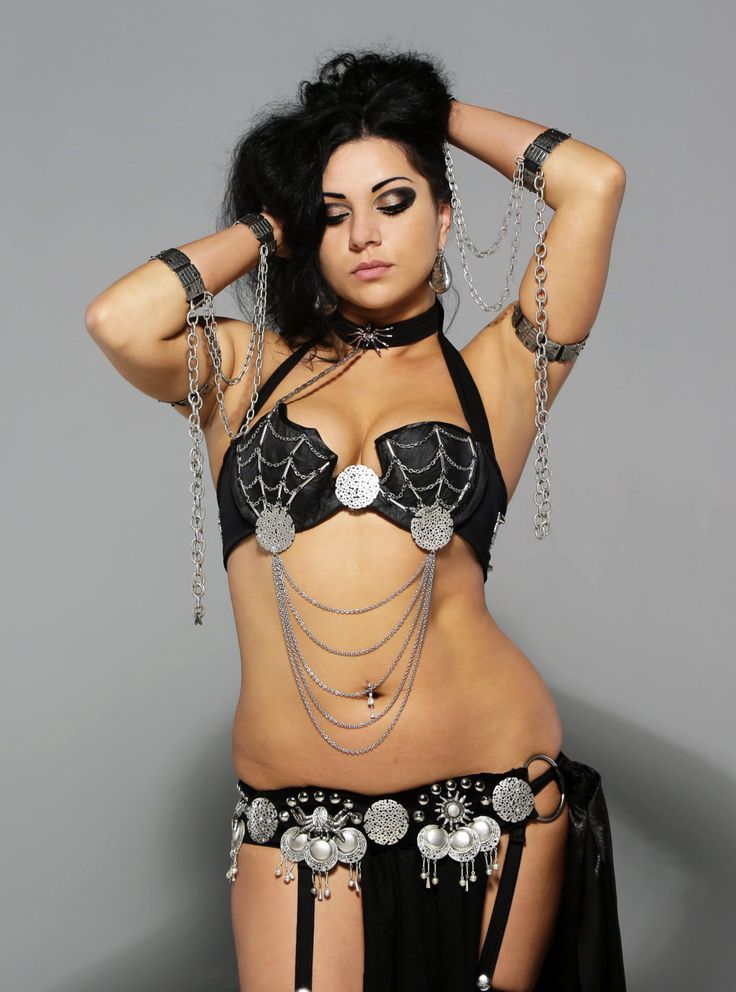
The dance is often performed barefoot to highlight the connection between the dancer and the earth. Belly dancing costumes are made of flowing, brightly colored garments adorned with scarves, veils and jewelry. Some performers learn how to belly dance with accessories including finger symbols, coin belts or even swords.
Why Was Belly Dancing Created?
Contrary to popular belief, belly dance was not meant to be a dance of seduction or for the entertainment of men, but rather a form of feminine expression and celebration.
In some traditions, women gathered to perform belly dances together after the evening meal as an opportunity to socialize. This is where mothers of young bachelors could meet and observe potential wives for their sons.
In many cultures, belly dance, also called Oriental dance among other names, is a joyful dance performed by friends and family at occasions such as weddings and festivals. One of the foundations of learning how to belly dance with confidence, is that it is important to relax and enjoy the experience.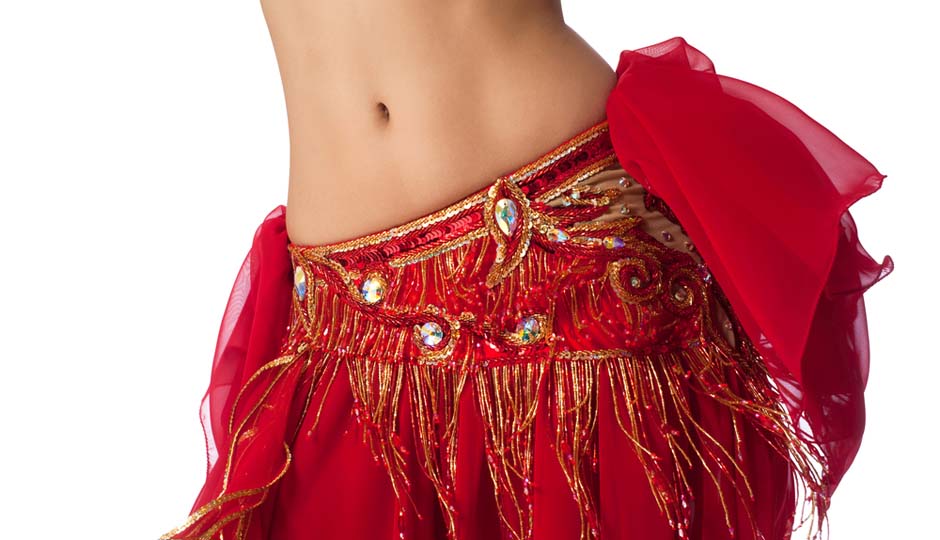
Belly Dancing History and Origin
Understanding the origin of belly dancing and the rich history of this unique style is an important step in learning how to belly dance. As one of the oldest known styles of dance, with roots in ancient cultures from India to the Middle East, belly dancing has a long history layered with meaning and legend.
What Was the Original Purpose of Belly Dancing?
A fertility ritual performed by women thousands of years ago in honor of their deities is believed to be belly dancing’s origin and is depicted in ancient Egyptian tomb paintings, Greek sculptures and engravings discovered in Italian caves.
Other versions of belly dancing have been recognized in civilizations stretching from the South Seas and East Polynesia to Africa, Greece and throughout the Middle East.
One legend with versions across a number of cultures is of Ishtar and the Dance of the Seven Veils.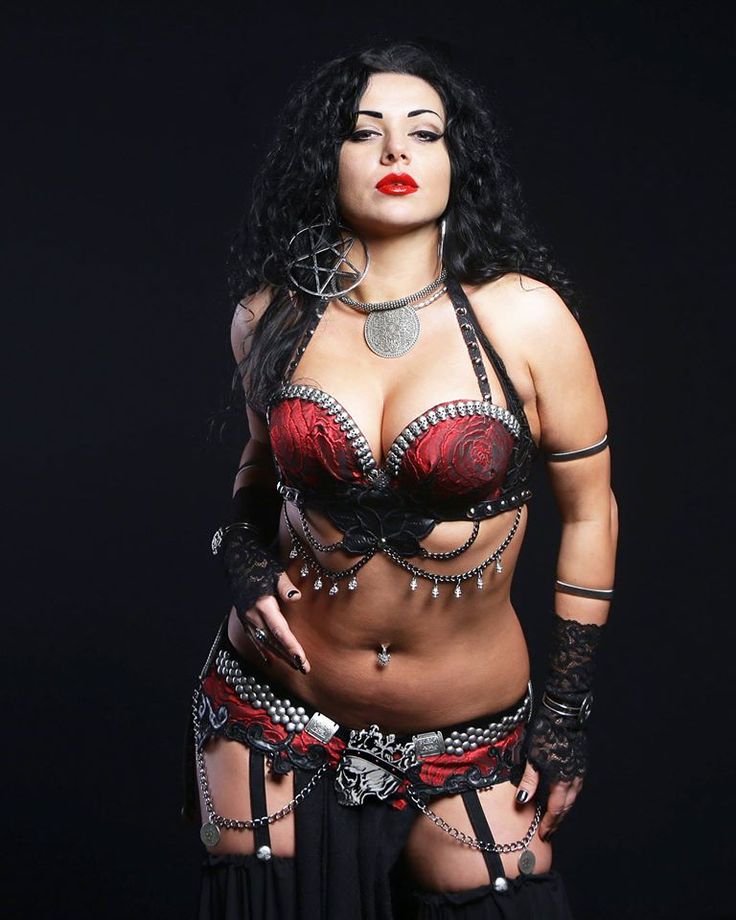 Ishtar, a Babylonian goddess of love and sensuality who was both chaste and fertile, descends into the land of darkness covered in seven veiled costumes to retrieve her deceased husband.
Ishtar, a Babylonian goddess of love and sensuality who was both chaste and fertile, descends into the land of darkness covered in seven veiled costumes to retrieve her deceased husband.
To enter each seventh gate of the underworld, she dances, rolling her abdomen in circles, giving up a jewel and a veil. Despite the trials of her journey, Ishtar triumphs, returning with her seven veils to a bountiful homecoming.
When Did Belly Dancers Become so Popular?
In the eighteenth century, Europeans traveling in Egypt witnessed a distinctive style of dance, the Egyptian belly dance. A stark contrast to the fashions of England or France, the Europeans were mesmerized by the undulating movements. Belly dance continued to make its way to the West being introduced to America at the 1893 Chicago World’s Fair.
What promoters described as “belly dance” became an instant success in turn-of-the-century America. Despite the remnants of modesty from the Victorian era, belly dancing spread to Coney Island and other major cities.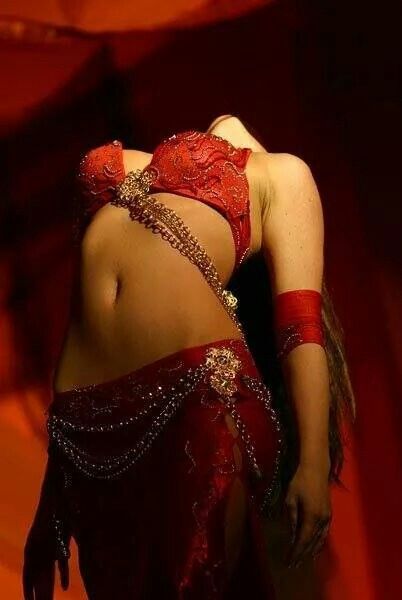
The popularity of belly dancing throughout the West extended from colonialists enjoying the dance as entertainment in nightclubs to the film industry both in Hollywood and abroad, where the sequined bras and belted costumes now commonly associated with belly dancing were first introduced.
A pivotal moment in belly dancing history arrived as these Western influences returned to the Middle East, changing the nature and appearance of the dance. Belly dancers such as Samia Gamal and Tahia Carioca became international stars as Egyptian belly dance was frequently performed in clubs and cabarets as well as on the silver screen, inspiring many Westerners to appreciate and learn how to belly dance.
via CanvaWhy is Belly Dancing so Popular Today?
Today, travelers in many parts of the world seek to enjoy belly dancing as part of their experience of the local culture, whether taking in typical Moroccan nightlife or watching hula dancers in Hawaii.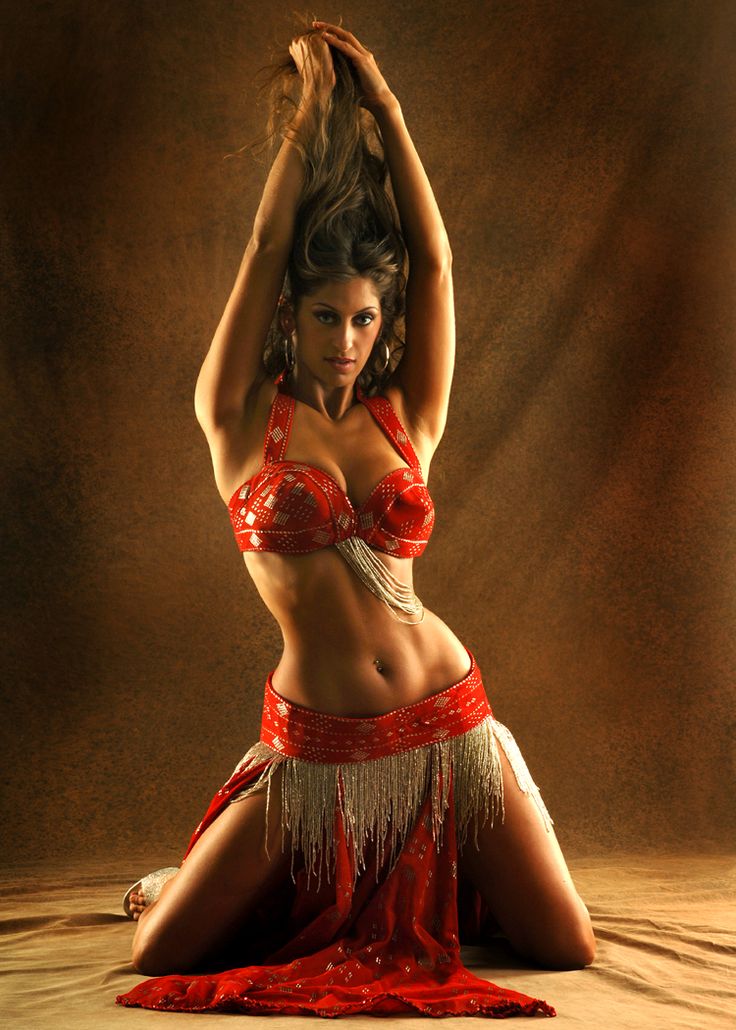
Immigrants and descendents from countries throughout the Middle East and other regions where belly dance is practiced are free to express and share their native style of dance in restaurants, entertainment venues and dance studios throughout the West.
With its uniquely gentle movements and ability to tone often under-exercised muscles, learning how to belly dance as a form of exercise has also gained popularity and can be practiced in dance and fitness classes across the world.
Egyptian Belly Dance
Although there are many styles that make up modern Egyptian dance, the traditional Egyptian belly dance known as raqs sharqi in Arabic is most common for those learning how to belly dance in the West.
This form of Egyptian belly dance is traditionally performed solo as an artistic and emotional expression and grew largely out of films made in Cairo, Egypt’s Hollywood, that made Egyptian belly dancers famous around the world. The belly dancing costumes of the West were largely inspired by Egyptian belly dancer outfits of this style and time in Egyptian belly dance history.
The belly dancing costumes of the West were largely inspired by Egyptian belly dancer outfits of this style and time in Egyptian belly dance history.
Egyptian Belly Dance Costumes and Moves
Other popular forms of Egyptian dance include the social and celebratory beledi and sha-abi, often performed in groups at special occasions such as weddings and a variety of folk style dances such as melaya leff among others. Some dances feature props and garments such as canes, scarves or veils and each style has its own rhythms, costumes and character.
Some styles are more akin to the faster paced Turkish belly dance while others include lyrical movements similar to ballet. Elements of many forms of Egyptian dance are incorporated by Egyptian belly dance teachers in the United States and often serve as the foundation of learning how to belly dance in the West.
What Does Belly Dance Do for Your Body?
Is Belly Dance a Good Workout?
Years of research have shown that dancing of any style can have a number of physical and mental benefits.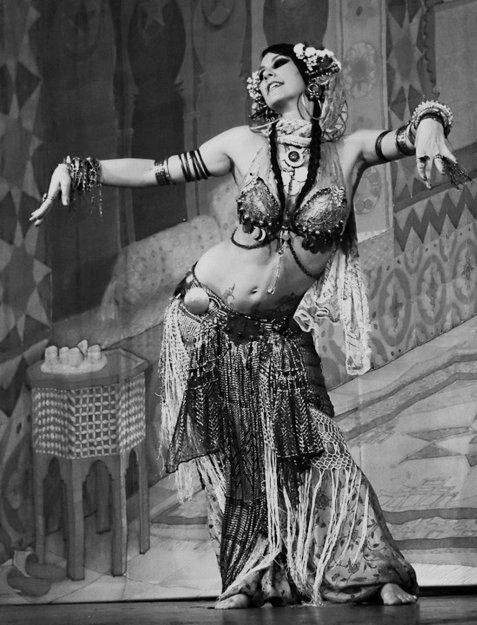 Learning how to belly dance strengthens the abdominals, thighs, calves, arms, back, glutes and hips as well as otherwise hard-to-tone muscle groups.
Learning how to belly dance strengthens the abdominals, thighs, calves, arms, back, glutes and hips as well as otherwise hard-to-tone muscle groups.
Learning how to belly dance can also help to improve posture and develop muscle control. Because of its relatively gentle impact on the body, belly dancing is accessible to individuals of all levels of fitness and can even be practiced during pregnancy to help prepare the muscles of the abdomen for childbirth.
Psychological Benefits of Belly Dancing
Dancing is believed to improve mental health, while belly dancing in particular may promote a positive body image for dancers as they embody the flowing, sensual movements.
As described in Science Daily, researchers have found that “belly dancers see their own bodies in a better light…and are less likely to be dissatisfied with how they look.” Regularly practicing dance and joyful movement has been shown to lessen depression, increase self-esteem and improve overall psychological well-being.
Researchers in Psychology Today explain that expressive practices and therapies such as music and dance, “could help lessen mental fluctuations before the onset of full depression” in addition to having creative, collaborative and social benefits.
Social Benefits of Belly Dancing
Participating in a class for belly dance for beginners will help encourage creative expression while building a sense of community. Many belly dancing classes promote socialization amongst members with a number of opportunities to bond available through gatherings, workshops and festivals.
For those hailing from countries where belly dance is a traditional part of celebrations and customs, practicing belly dance can strengthen connections to their heritage. Those who are foreign to the dance may find that learning how to belly dance helps them appreciate both the movements and their significance to belly dancing’s native cultures.
via CanvaEven for those with little dance experience, learning how to belly dance can be a source of enjoyment and strengthened confidence.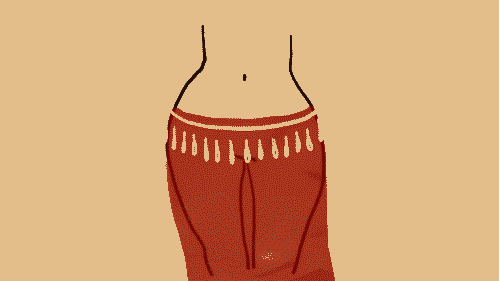 Exploring the sensual movements of belly dance helps connect you to your body and develop your ability to creatively express yourself through the dance.
Exploring the sensual movements of belly dance helps connect you to your body and develop your ability to creatively express yourself through the dance.
With a rich and diverse history celebrating the female form and a variety of physical and mental benefits, learning how to belly dance might become your new favorite activity.
For even more creative ideas and inspiration, check out other experiences happening on Classpop!
Related Articles
A Beginner's Guide to Bachata DancingA Beginner's Guide to Cumbia Dancing
How to Line Dance Like a Pro
How to Slow Dance With Style
How to Salsa Dance Beginner’s Guide
How to Swing Dance: A Beginner’s Guide
How to do the figure eight with the hips. figure eight hips belly dance
The hips, belly and pelvis, without a doubt, play a central role in oriental dance, being the focus of female energy. It is on the hips and abdomen that the main attention of the viewer is concentrated. These parts of the body are most involved in the dance and seem to be designed to perform the key and most expressive elements of bellydance.
It is on the hips and abdomen that the main attention of the viewer is concentrated. These parts of the body are most involved in the dance and seem to be designed to perform the key and most expressive elements of bellydance.
One of the most enchanting movements in belly dance is the enigmatic, flowing, serpentine figure eight of the hips. At first glance, what could be difficult in the implementation of an ordinary geometric figure - the figure eight? However, this eight is not so simple, but quite intricate. And inside it lies many secrets. Only in a bellydance lesson are all the secrets of how to do the figure eight beautiful with the hips revealed: this is the direction of movement of the hips, and the amplitude of the braces, and the position of other parts of the body during the execution of the figure eight.
In the figure eight, the hips work in isolation, while other parts of the body remain motionless. It is this technique that helps to focus on the hips, so that the movement looks beautiful.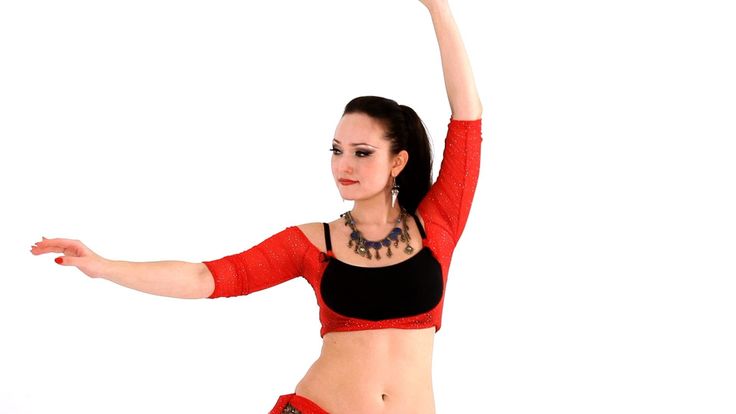 If the dancer has forgotten about this trick or has not worked out such a skill enough, if the shoulders or chest begin to move along with the hips, the movement will look “blurred” and unprofessional.
If the dancer has forgotten about this trick or has not worked out such a skill enough, if the shoulders or chest begin to move along with the hips, the movement will look “blurred” and unprofessional.
Before making the figure eight with the hips, it is necessary to prepare, stretch the lateral muscles: it is the well-developed muscles of the body that allow you to achieve a large amplitude, due to which the movements of the hips produce an effect on the viewer even from afar. The figure eight is advantageously combined, for example, with twists - and for their implementation, the preparation of the muscles of the body is also needed.
When performing the figure eight, the position of the body, back and shoulders is important. Eights are of various types, depending on the trajectory of the movement of the hips - horizontal and vertical, external and internal. They are perfectly combined with shaking, penetrations, twisting.
In her classes and video lessons, Samira always reminds dancers of their individuality in dance and recommends “trying on” movements and elements.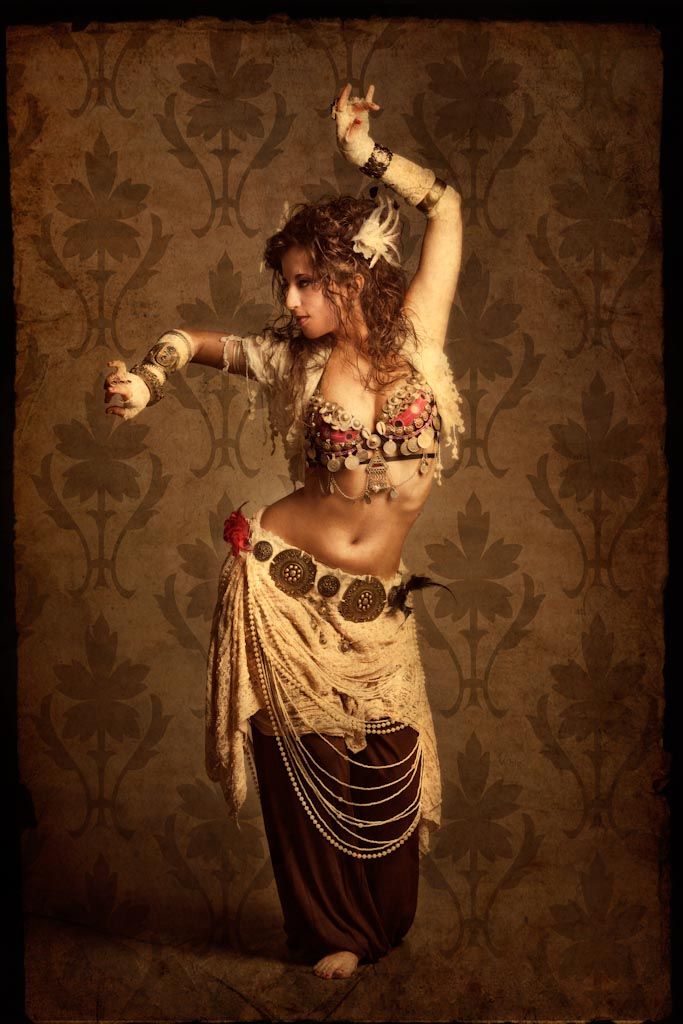 So, when doing a figure eight with your hips, you need to watch your body and see in which position this movement will look most impressive.
So, when doing a figure eight with your hips, you need to watch your body and see in which position this movement will look most impressive.
Thanks to such high-quality elements as the figure eight of the hips, belly dance acquires its authenticity, unique originality and true feminine beauty!
| Personal video consultation |
| Buy video tutorial | ||||||
|
Duration: 20 minutes
Payment is possible via PayPal
or on a Sbercard (without interest)
Write on [email protected] a detailed explanation of the "Eight" movement and its variations, as well as common mistakes in its execution.
Read
Watch
About school
Information
X
Hip movements. Belly dance. Master's Lessons. Advanced level
Hip movements
Starting position: standing on a full foot, legs slightly apart (about the width of the foot) and located on the same line parallel to each other, the body is slightly tilted back, the back is straight, the stomach is relaxed, the arms are lowered along the body, the knees are “soft”.
Performing an exercise "Swinging hips back and forth ("inward" and "outward"). We take the buttocks back as much as possible, while we do not deviate back, hands are brought behind the back. Then we draw the buttocks into ourselves as much as possible, and bring our hands forward with a smooth movement. We tighten the hips, sharply reducing the muscles of the buttocks so that the pelvis leans forward and up a little.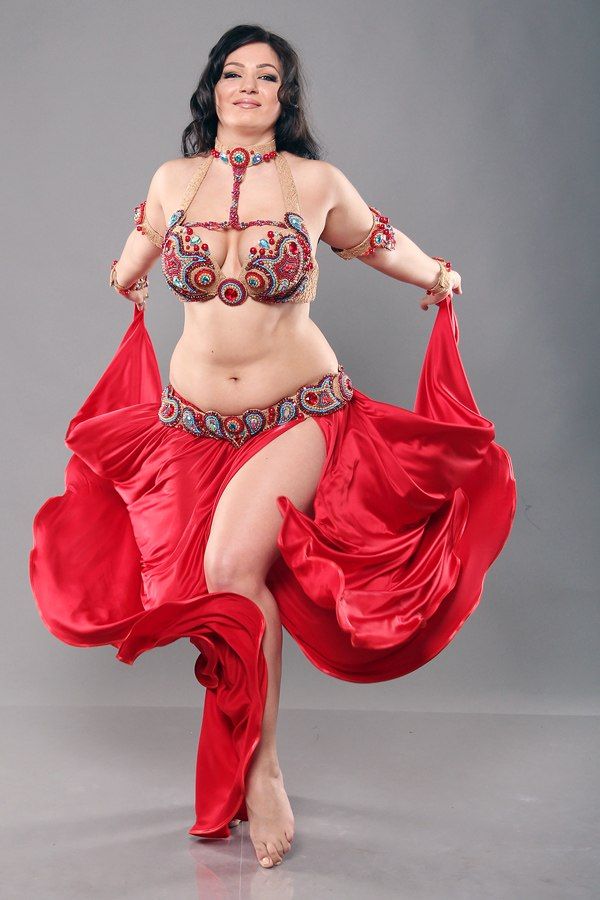
We linger for a few seconds in this position. Then we take the hips back as far as possible - the legs and body remain motionless - and arch.
We work in the vertical (frontal) plane. Again, we reduce (squeeze) only the muscles of the buttocks so that the pelvis leans forward and up a little ("inward"). Movement of the pelvis forward and up - back and up, emphasis at the farthest point of this movement - again the pelvis "in itself" - again back and up, emphasis, etc.
Try to keep the movement in the frontal plane along the path of the lower arc of the semicircle. Remember your posture: shoulders down, back straight.
Starting position: standing on a full foot, legs slightly apart (about the width of the foot) and located on the same line parallel to each other, the body is slightly tilted back, the back is straight, the stomach is relaxed, the buttocks are tightened, the knees are “soft” and slightly bent, arms to the sides. We perform a rocking chair with the hips.
We perform a rocking chair with the hips.
The rocking chair is performed by alternately straightening the knees: without changing the position of the left leg, we straighten the right leg at the knee, due to which the right thigh is “pushed” up and we sort of pull it under the rib (in this case, the lateral abdominal muscles contract).
While moving, do not tear off the heels and do not transfer the center of gravity from foot to foot. The top remains motionless and does not sway during the work of the hips. We make sure that the hips move only up and down, do not take them to the side or back. They should be relaxed - only the knees work. Now we bend the right leg at the knee - we lead the left thigh up.
We continue the alternating movement with one or the other hip, without deflecting the body and keeping the line of the shoulders in the same position - parallel to the floor.
Imagine that you have a bowl of water on your head and your task is not to spill the water.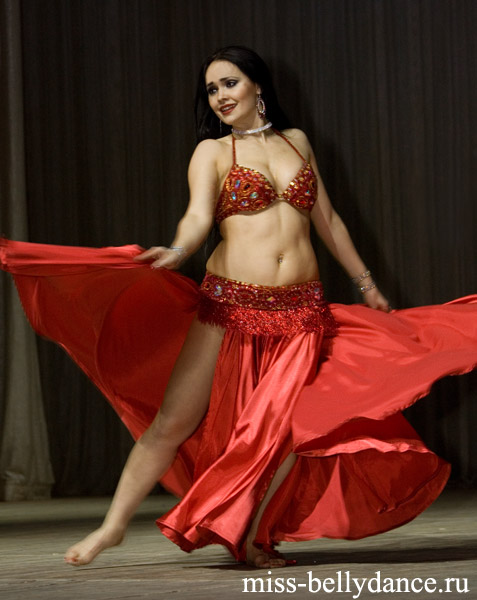 You can also try to put a book on your head during this exercise and try to move so that it does not sway, much less fall.
You can also try to put a book on your head during this exercise and try to move so that it does not sway, much less fall.
Execute rocking the hips to the sides in three counts: right-left and a little slower to the right - slightly slow down the knee extension before starting to move in the other direction (without a pause in the movement), left-right and a little slower to the left, slightly slowing down the knee extension until the next movement to the other side. Movements should be smooth, unhurried, but continuous. Simultaneously with the rocking chair, we perform circular movements with the hands. Again we make a rocking chair with our hips to the sides without pauses. At the same time, we raise our hands up, at the same time performing rotations with the wrists along the trajectory of the eight. Repeat the movement with the hips at a fast pace.
If desired, the pace of side rocking with the hips can be increased even more: increasing it gradually and maintaining the rhythm, move on to shaking the hips. When shaking-rocking chair, the pelvis swings due to the work of the muscles of the lower back, the legs become freer. With this shaking, you can learn to walk quite easily. For example, climb on the "half-toes" and try to go forward with shaking, and then back. The faster the hips move, the more they need to relax. But don't forget to work with your hands.
When shaking-rocking chair, the pelvis swings due to the work of the muscles of the lower back, the legs become freer. With this shaking, you can learn to walk quite easily. For example, climb on the "half-toes" and try to go forward with shaking, and then back. The faster the hips move, the more they need to relax. But don't forget to work with your hands.
If at first the shaking is good for you, and after a minute or two the muscles begin to “stone” and the shaking rhythm is lost, it doesn’t matter. Stop, shake your legs alternately, relax your muscles and start shaking again. The vibration of the body is given by muscles relaxed at your will, and not by tension.
Performing a rocking chair at a fast pace, we take the pelvis forward, then back and then move in a circle to the left. So we impose movement "rocking hips back and forth" for movement "small circle of the hips in the horizontal plane" plus circular movements of the hands.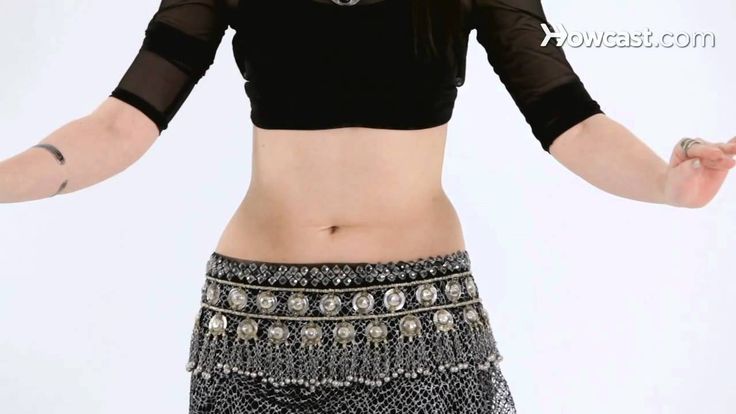
Connecting the side rocker with the hips pulling with the hips, continuing to rotate with the wrists.
Hip pull is a basic element of oriental dance, a movement from the group of slips. It should be done every day during every workout.
Starting position: we stand straight on a full foot (legs are on the same line), the body is slightly tilted back, the back is straight, the legs are shoulder-width apart, the knees are “soft”, the arms are at the sides. We take the hip as far as possible to the left (without ceasing to perform the rocking chair at the same time), leave the legs and the upper part of the body motionless and transfer the body weight to the left leg. Shoulders, belt line during pulling remain parallel to the floor, knees do not bend. We pull the hips to the right and transfer the weight of the body to the right leg. The hips move to the right and left with maximum amplitude.
Pulling the hips stretches the lateral muscles, strengthens the muscles of the lower back and abdomen, perfectly tones the muscles of the waist, and also helps to prepare the body for further performance of various oriental movements (in particular, amplitude volumetric eights and rotations).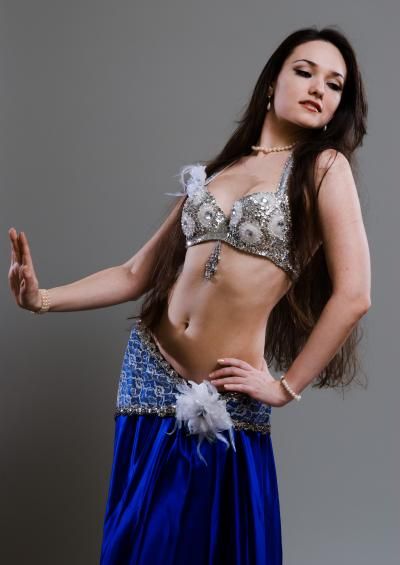
By sliding the hips, you can move back and forth and left and right.
After pulling with the hips, we move on to another basic movement, simple to perform, but effective and easily combined in dance with other elements, - eights. Let's start with the execution of horizontal eights (movements are performed in a horizontal plane clockwise and counterclockwise).
Horizontal figure eight backwards (“away from you”). While pulling, we lingered for a moment in a position where the left hip was maximally abducted to the left and, accordingly, the weight of the body was on the left leg.
Now we lead the right thigh diagonally forward to the right, wrap it as much as possible and begin to outline the first half of the imaginary figure eight - we bring this thigh back.
Next, the left thigh is brought forward (the weight of the body is gradually transferred to the left leg), turns as much as possible (until you see your left buttock out of the corner of your left eye) and begins to outline the second half of the eight: to the left until it stops, and then back to the left.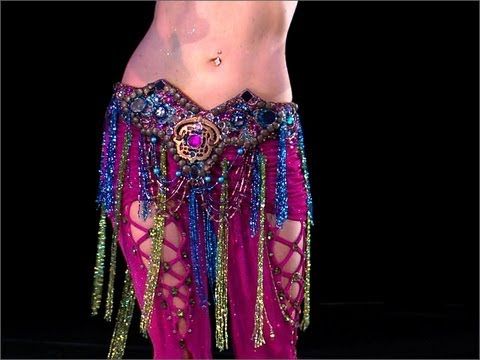
Only the lower part of the body moves. Breathing remains even and smooth, like the movement itself.
You can help yourself a little: when the hips are twisting in one direction, slightly twist the body in the other (so that the hips do not drag it along).
Straight knees, feet that remain parallel, and heels that stay on the floor will help you achieve a smooth, soft and continuous movement. Imagine that you are making your way forward without the help of your hands through some rather dense, viscous substance and, as it were, are raking it with your hips, alternately pushing it to one side or the other.
This exercise increases the elasticity of the ligaments.
Movement "horizontal figure eight forward ("inward")" schematically looks the same as the previous one, only performed in the opposite direction. We take the left thigh back diagonally to the maximum twisted position (in which the chest still remains motionless).
Body weight is transferred to the left leg. With a smooth circular motion, we describe half of the eight forward with the left thigh, maximally turning the right thigh back. We transfer the weight of the body to the right leg.
In a circular motion, move the right thigh forward and describe the remaining half of the figure eight. We try to bring the hips forward no less than back. We do not turn our shoulders. They must always look ahead. If you are still not very good at “separating” the top from the bottom, try doing the figure eight with your whole body first. I managed to catch the trajectory - you can move on to fixing the body and start moving only the hips.
Try to bring your hips forward no less than back, then the movement will be smooth and symmetrical. Keep an eye on the upper body: it should remain motionless, but not enslaved, keep the line of the shoulders parallel to the floor line.
When performing the figure eight, the legs should be placed parallel to one another and on the same line, not just for stability or beauty: if you put them in an eversion position (heels together, toes apart), then, involuntarily pinching the buttocks, limit the amplitude of their movement.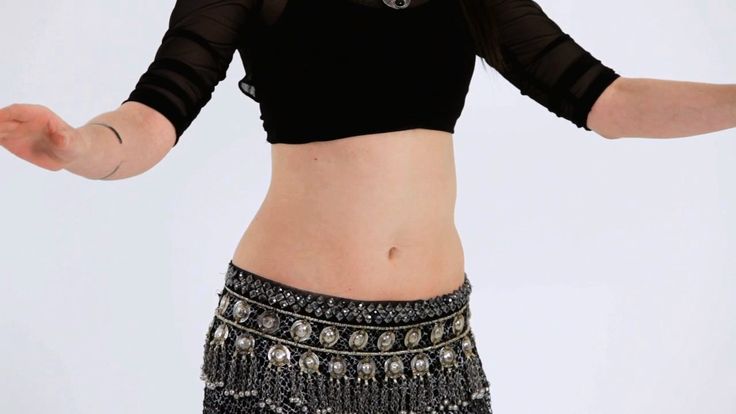
Another version of the eights with the hips - vertical figure eights, or, as they are figuratively called, "pendulums". The second name of this dance component was not born by chance: remember how the pendulum of the clock moves, describing the lower semicircle of an imaginary circle, like a young crescent turned upside down with “horns”. The oriental dancer reproduces the described trajectory with the help of hip movements in a strictly vertical plane. Vertical eights can be performed, like horizontal ones, in two directions opposite to each other: “away from you” (from top to bottom) and “into yourself” (from bottom to top).
We are still standing on a full foot (legs are located on the same line and parallel to one another), the body is slightly tilted back, the back is straight, the buttocks are tucked up. But now, to perform the "pendulum", put your feet together. Body weight on the left leg. We tear off the right heel from the floor and raise the thigh as high as possible.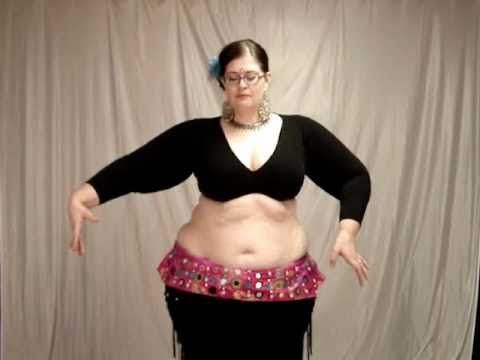
The weight of the body is gradually transferred to the right leg. Further, drawing a quarter of a circle to the right and down, we begin to lower the right thigh, at the same time pushing it as far as possible to the side, that is, to the right. From this extreme side point, we continue to lower the thigh to the lowest point of the circle thanks to the “soft” knee. Body weight on the right leg. We put the heel of the right foot on the floor and lower the right thigh down.
Now we tear off the left heel (knee is relaxed), lift (due to lifting the heel off the floor) the left thigh up (as if leading to the armpit) and push it to the side as far as possible, without deflecting the body in the opposite direction and outlining a rather steep semicircle of the imaginary eights.
Pull the thigh towards you, returning to the starting position. We continue to draw symmetrical circles in a vertical plane. The body should remain motionless, and the line of the shoulders should be parallel to the floor line. Add hand movement to this dance element.
Add hand movement to this dance element.
Hands in oriental dance move depending on the nature of the music, and therefore often their movements do not coincide with the movement of the hips: the hands work at least twice as slowly as the hips. If the hips are the rhythm, then the arms are the melody.
From the previous starting position, smoothly proceed to the next movement - step Suher Zaki, or "stilts".
We stand on straight lines, located on the same line parallel to one another on toes, the body is slightly tilted back, the back is straight, arms to the sides. We begin to alternately lower the heels to the floor in three counts. We lower the heel of the left leg - the left thigh goes down, then we raise the heel of the left leg, returning to its original position (on the toes), and lower the heel of the right leg.
Left - right - left - paused for a moment. Right - left - right - lingered for a moment. And so several times in a row in the rhythm of the sounding melody. We do not bend our knees - we only raise our hips. The head is on the same level: the movement occurs mainly only due to the hips. Continuing to perform the movement, alternately tear off the legs from the floor.
Right - left - right - lingered for a moment. And so several times in a row in the rhythm of the sounding melody. We do not bend our knees - we only raise our hips. The head is on the same level: the movement occurs mainly only due to the hips. Continuing to perform the movement, alternately tear off the legs from the floor.
And now we “walk” on the spot without delays and stops, but still in time with the melody.
If this movement is performed correctly, you will feel the movement of the oblique muscles of the abdomen.
Performing the following exercise − hip dumps (otherwise - hip-down strikes). Starting position: standing in a semi-squat and half-turned to the viewer. The body looks forward, the hips and legs are turned to the side at an angle of 45 °. We put the leg closest to the viewer (mirror) (working in this movement) in front of the one behind, on the toe, and expose its thigh and turn it forward (toward the viewer), as far as the body allows.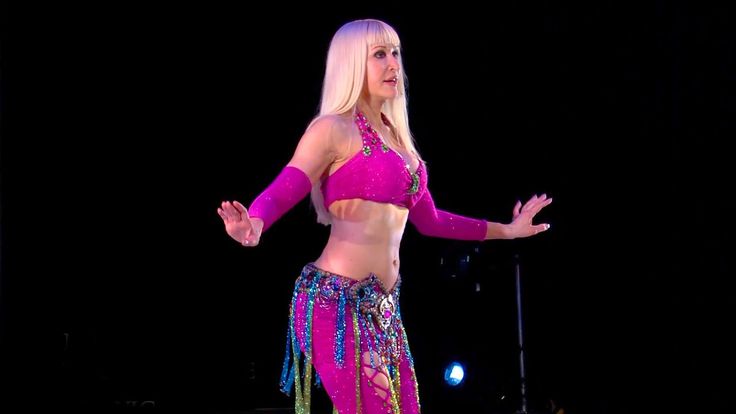 The back is straight and slightly tilted back, arms are spread apart.
The back is straight and slightly tilted back, arms are spread apart.
Try to keep your knees together while moving.
So, keep your chest and shoulders straight. We start the movement with the left foot, so we put it on the toe in front of the right, raise the right hand up, take the left hand to the side. Raise the thigh of the working leg up by straightening the knee, then sharply lower (throw) the thigh, again bending the working leg at the knee.
Do not lower the heel to the floor. We do the emphasis while moving down (at its maximum lower point). At the same time, the hands make smooth circular rotational movements. We repeat the movement a few more times, and then change the leg - we become half-turned to the viewer (mirror) with the right hip forward, respectively raise the left hand up, take the right hand to the side and work with the right hip.
If you relax your hips well and bend your leg at the knee, the hip will "fall" by itself.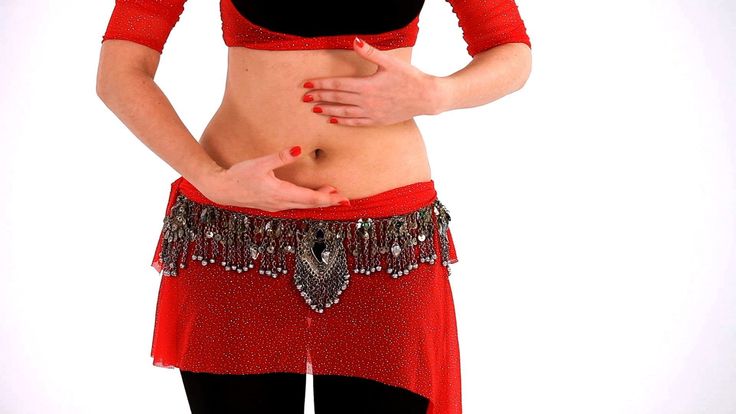
Let's complicate the main movement "resetting the hip" with the extension of the leg, and we get a new movement - "classic key" (thigh drop with leg extension).
Starting position - as in the previous exercise: standing in a semi-squat and half-turned to the viewer. The body looks forward, the hips and legs are turned to the side at an angle of 45 °. We put the leg closest to the viewer (working in this movement) in front of the one behind (supporting), on the toe, and expose its thigh and turn it forward (towards the viewer). The back is straight and slightly tilted back, the arms are spread apart (option - the arm of the same name as the supporting leg is raised up).
We perform one reset with the right hip, the emphasis is while moving down (at its lowest point). Raise the right thigh again, and then lower it, while throwing the right leg forward, the toe of the foot stretches forward and down.
Raising the hip up each time, we continue to alternate the impact with the hip down (hip drop) with the hip drop with leg extension. We perform this movement several times, and then change the leg - we work with the left thigh.
We perform this movement several times, and then change the leg - we work with the left thigh.
"Key" can be performed on weight. In this case, when the leg lunges forward, its toe does not touch the floor, that is, we keep the leg in the air.
We continue to develop the spine and back muscles.
Changing the starting position: standing on a full foot, legs slightly apart (about the width of the foot) and located on the same line parallel to each other. The body is slightly tilted back, the back is straight, the stomach is relaxed, the knees are “soft”, the arms are at the sides, the weight of the body is on the left leg (as in a pull).
Execute semicircle hips.
We take the hips forward - the body deviates back, but the head does not throw back in any case (!) - and take it to the right, outlining (with maximum amplitude) an imaginary semicircle.
Now let's make a full circle.
Circle of the hips is a movement familiar to each of us since school or even kindergarten times. He was certainly included and is still included in a variety of gymnastic complexes called "hip rotation".
At first, to help you check whether the shoulders and upper chest are moving horizontally or vertically during the exercise, you can put your hands on your shoulders.
Combine the hips forward semicircle with the back semicircle and perform a full circle with the hips to the left on straight legs. The hips move along all four points: we take them forward (the body leans back, but the head does not throw back), we take them to the left, wrapping the hips, we take them back, transferring the body weight to the right leg, we take them to the right, etc.
While the hips make a circle, the head, shoulders and arms remain at the same level. We repeat the rotation of the hips to the left again, and then we perform a circle in the other direction: right - forward - left - back, trying not to move the upper body and keep the line of the shoulders parallel to the floor line.
This text is an introductory fragment.
Driving mode control information
Driving information When driving a car, the driver receives a huge amount of information, but attention must be focused on the main thing that determines the current traffic situation or interferes with traffic and threatens to run over or
Circle movement adjustment
Adjusting the movement of the circles The speed of movement of the circles depends primarily on the specific gravity of the material from which they are made (foam and cork circles float faster in the wind than wooden ones). The thicker the circle, the faster the movement. At the circle with a thick and
Breast movements
Breast movements Check your posture.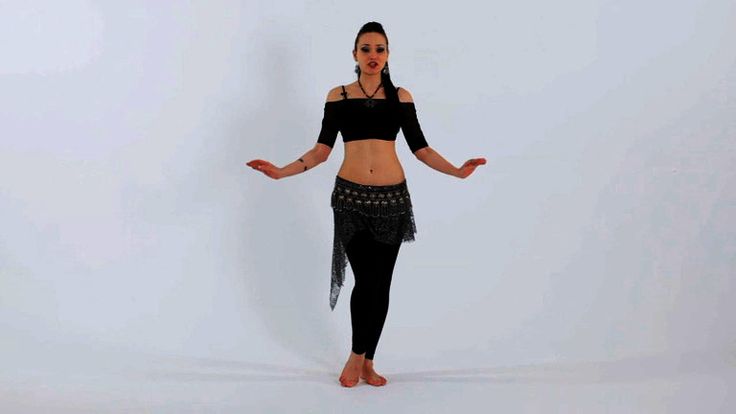 Stand up straight, pull in your stomach, push your chest slightly forward, both feet are stable and firmly on the floor, arms are spread apart. We start chest movements. Without moving the lower part of the body, we raise (push out) the chest with a short movement
Stand up straight, pull in your stomach, push your chest slightly forward, both feet are stable and firmly on the floor, arms are spread apart. We start chest movements. Without moving the lower part of the body, we raise (push out) the chest with a short movement
Tilt motion
Tilt movements Let's move on to the movements in the pull. Starting position: stand straight on the full foot (legs are on the same line), the body is slightly tilted back, the back is straight, the legs are shoulder-width apart, the knees are “soft”, the arms are at the sides. Pull the hips to the right and shift the weight
Walking with cane on shoulder
Walking with a cane on the shoulder Holding the cane on the right shoulder, perform penetration "C grade" with a turn in place around its axis in the direction to the left.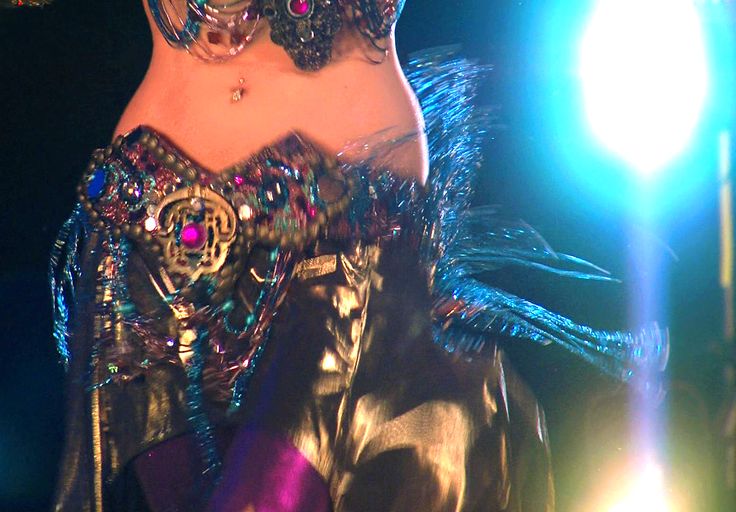 Raise the left thigh and leg, bent at the knee, up. Then we lower the thigh down (while the left leg is still
Raise the left thigh and leg, bent at the knee, up. Then we lower the thigh down (while the left leg is still
Movement with shawl
Movements with a shawl The dance with a shawl (scarf, veil, handkerchief) is one of the most traditional. A scarf can amazingly transform, decorate the movements of a dancer. Its possibilities are almost limitless, and therefore working with it is a special pleasure. Competently
Travel speed
Travel speed One of the key factors affecting the efficiency of the car is the speed of movement. Everyone knows that the most economical driving mode is driving on a country road in calm weather at a speed of about 80–90 km/h at the highest (in
How the motion sensor works
How is the motion sensor In the middle of the sensor, there are receivers of IR light - photocells. The Fresnel lens consists of many small lenses, each of which focuses IR light on the plane of the photocell, and one of them focuses directly on the photocell itself (signal
The Fresnel lens consists of many small lenses, each of which focuses IR light on the plane of the photocell, and one of them focuses directly on the photocell itself (signal
Motion sensor infrared Camelion
Infrared motion sensor Camelion The motion sensors of the Chinese company Camelion are widely and varied in stores. Economy-class infrared sensors, which were created as energy-saving switches, primarily lighting, although their functions are almost
3.5.6. Motion detectors LX-19B and LX-2000
3.5.6. Motion detectors LX-19B and LX-2000 Infrared motion sensors are commercially available, adapted in shape to wall light switches for flush wiring (Fig. 3.62) LX-19B and LX-2000 (Fig. 3.63) manufactured by the Chinese company Litarc Lighting & Electronic Ltd. Rice. 3.62. Household light switch
3.




